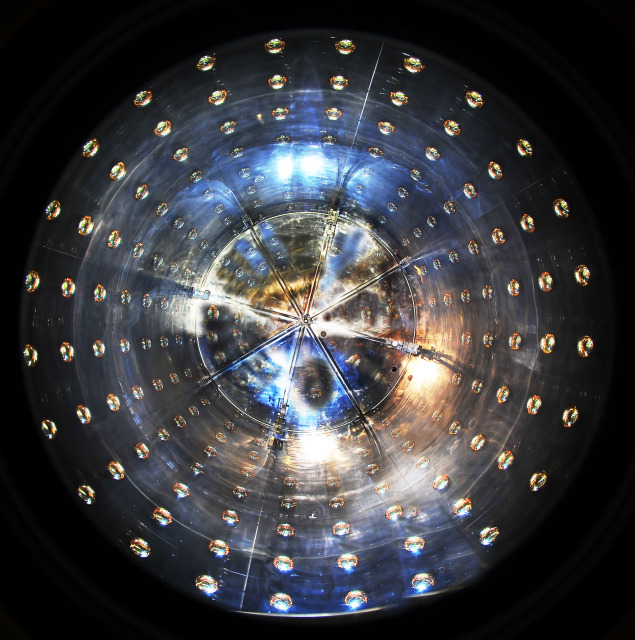000
The photomultiplier tube (PMT), a vacuum electronic device with higher sensitivity and quicker response, has been extensively applied in the high-energy physics. The high energy physics research involves in-depth exploration and analysis of fundamental particles, atomic nuclei and cosmic rays, and PMT serves as an indispensable detection tool in this domain. A detailed discussion on the application of PMT in the high-energy physics is made here to ensure everyone comprehensively understands the important role of the PMT.
1. Working Principle and Characteristics of PMT
PMT works based on the photoemissive effect and secondary electron emission effect, and PMT structure mainly contains photocathode, focusing electrode, dynode, and anode. When photons are incident on the photocathode, the photocathode stimulates photoelectrons due to the photoelectric emission effect. These photoelectrons are accelerated and collided with the dynode under the action of the electric field, producing more secondary electrons. These secondary electrons undergo multiple multiplications, the number of electrons has a remarkable increase and detectable electrical signals are ultimately formed. PMT’s advantages rest in high sensitivity, fast response, and low noise, therefore, it is an ideal detection tool for weak light signals.
2. Application of PMT in High Energy Physics
① Detection of Particles
In high-energy physics experiments, PMT is a significant part of particle detectors and widely applied in various experimental devices (Fig. 1). For instance, PMT can be used to measure the trajectory and energy of charged particles. Many key parameters like mass, charge, and momentum of particles can be calculated by means of accurately measuring the flight time and deflection angle of particles in a magnetic field. Moreover, PMT can also be applied to detect neutral particles (e.g. photons, neutrons, etc.) and indirectly detect the properties of neutral particles by means of measuring the secondary particles generated throughout its interaction with matter.

Fig.1 ATLAS (CERN)[1]
Note: [1] Quote from CERN Accelerating science (https://home.cern/resources/image/experiments/atlas-images-gallery)
② Detection of Cosmic Rays
Cosmic rays refer to high-energy particle flows from space. The detection of cosmic rays is helpful to reveal the origin and evolution of the universe. PMT performs a vital role in detection of cosmic rays. PMT can be used to capture high-energy particles in cosmic rays and record their energy, direction, and intensity information through detectors installed at high altitudes or in space. These data are of great importance to the composition and sources of cosmic rays, and their interactions with the earth atmosphere. Moreover, PMT is also employed to monitor the impact of solar activity on the magnetic field and atmosphere of the Earth, so as to provide critical basis for space weather forecast and aerospace safety.
Beijing Hamamatsu manufactured 8-inch PMT waterproof package products in the LHAASO project (Fig. 2) in 2018. After this project went into service, a great number of ultra-high energy cosmic accelerators were discovered in the Milky Way galaxy, and gamma photons with an energy of 1.4 beat electron volts (beat=billions) were recorded, which broke people’s traditional understanding of particle acceleration in the Milky Way and opened up an era of Ultra-high Energy Gamma Astronomy. This result was published in Nature on May 17, 2021.
The LHAASO project found a giant and ultra-high energy gamma ray burst in the Cygnus this year, and identified the source [2] of cosmic rays with energy of higher than 100 million electron volts for the first time, and confirmed the first super cosmic ray accelerating source throughout astronomical history. This achievement was released in the academic journal Science Bulletin as a cover article on February 26, 2024, Beijing time. Beijing Hamamatsu was responsible for providing the PMT which is a critical component in the muon detector. During the whole installation and operation process, the failure rate of the PMT is 0, offering strong support for the goals of scientific exploration of the LHAASO project!
Note: [2] Selected from New Beijing News (https://baijiahao.baidu.com/s?id=1791921254202767073&wfr=spider&for=pc)

Fig.2 LHAASO
③ Nuclear Physics Research
PMT also plays a significant role in nuclear physics research. For instance, during nuclear disintegration experiments, PMT is used to measure the ray energy and intensity emitted by radioactive nuclides, so as to study the disintegration laws and properties of nuclides. Furthermore, during nuclear reaction experiments, PMT is employed to detect particles generated throughout the reaction and analyze the reaction mechanism and product distribution (Fig. 4). These researches have significant implications for understanding the basic laws of atomic nuclei, exploring new nuclear energy technologies, and dealing with issues like nuclear radiation safety.

Fig.4 8-inch PMT closely attached to the inner wall of a steel tank to detect the light signal emitted when neutrinos are captured[3]
Note: [3] Quote from IHEP (http://pic.ihep.cas.cn/tpk/dkxzz_tpk/pic_DYB/)
In a word, as the science and technology are constantly growing, PMT is more and more extensively applied in many fields, like environmental monitoring, industrial measurement, analysis, scientific research, medical diagnosis. The application of PMT in environmental monitoring will be continued in our next issue.